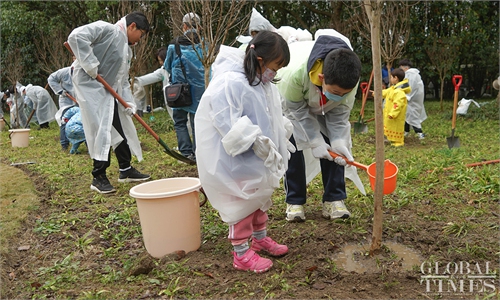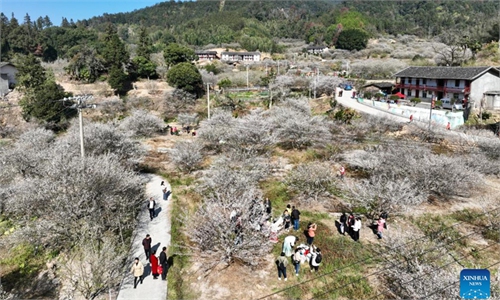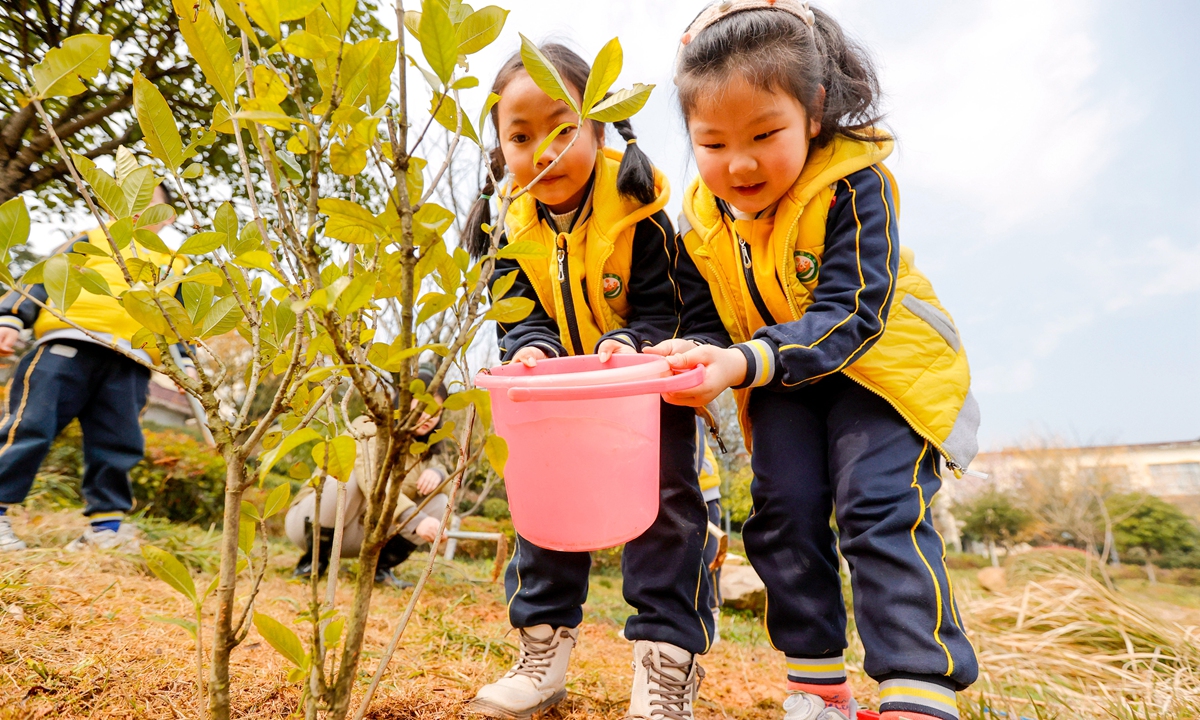
Children from the kindergarten in Xiajiang county water the newly planted saplings in the park on March 11, 2024, in Ji'an, South China's Jiangxi Province.Photo: VCG
As spring arrives in March, bringing warmer weather and blossoming flowers, people across China step outside to fulfill a civic duty - planting trees.March 12 marked China's 46th Arbor Day, a national day dedicated to tree planting and environmental protection.
The practice of afforestation and greening the nation is a duty for all citizens.
In Guangzhou, capital city of South China's Guangdong Province, more than 73,000 saplings have been planted through voluntary tree planting activities as of March 12, 2024, with 465 events organized. People from various sectors joined forces to plant native species such as camphor, yew, Chinese tallow, and high mountain fig trees.
On Tuesday, in Yutian county of Hotan Prefecture, Northwest China's Xinjiang Uygur Autonomous Region, an area near the desert and often afflicted by sandstorms, over 1,500 residents, including local officials, planted 36,000 red willow saplings during a spring tree planting event that was part of a desertification control project. Xinjiang plans to complete afforestation of 500,000 mu (202,354 hectares) this spring, according to local media reports.
The Three Gorges area of the Yangtze River also hosted an event on March 12 to reintroduce rare and endangered plants back into the wild. A total of 3,000 artificially bred specimens of two rare plants native to the Yangtze River, the Myricaria laxiflora and Plantago fengdouensis, were returned to their historical distribution areas, the Global Times learned from the China Three Gorges Corporation.
Notably, the Plantago fengdouensis is exceedingly rare. In 2022, 4,000 seeds of this plant traveled to space aboard the Shenzhou-13 manned spacecraft, spending 183 days in orbit before returning to Earth for cultivation trials. This reintroduction included 500 plants bred from these space-mutated seeds.
Besides planting new trees, residents are also engaging in tree care. The Beijing News reported that nearly 190,000 Beijing residents ventured outdoors to participate in garden city construction by cleaning up dead branches, leaves, and litter in local green spaces, parks, and gardening stations, fulfilling their tree planting duties.
The National Greening Commission revealed through a report that in 2023, China completed afforestation of nearly 4 million hectares, effectively protected 172 million hectares of natural forests, accomplished forest tending tasks over an area of 1.059 million hectares, piloted sustainable forest management in 181,000 hectares, initiated forestry carbon sink projects, established a national forest reserve of 564,000 hectares, and enhanced the quality and efficiency of returning farmland to forests and grasslands.
China's online greening platforms also published more than 24,000 activities last year, which attracted nearly 440 million visits, and promoted the establishment of over 1,500 tree-planting bases.
It highlighted a decade-long increase of 274 million mu in man-made forest area, accounting for a quarter of the global increase in forest resources, positioning China as the fastest-growing country in terms of forest resources.
Satellite-based vegetation index data over the past 40 years shows that China's average vegetation index has risen by 9.2 percent, double the global growth rate, significantly contributing to global greening, particularly through large-scale land greening projects in deserts, the northwest arid regions, and some eastern areas.
Thick forests provided a substantial source of revenue. Last year, the output value of China's forestry and grassland industry reached 9.28 trillion yuan (about $1.31 trillion), up 2.3 percent year on year, and more than 2.531 billion trips were recorded in ecotourism, the Xinhua News Agency reported on Tuesday.
Amid global climate change challenges, forests play a critical role in reducing atmospheric greenhouse gas concentrations and mitigating global warming.
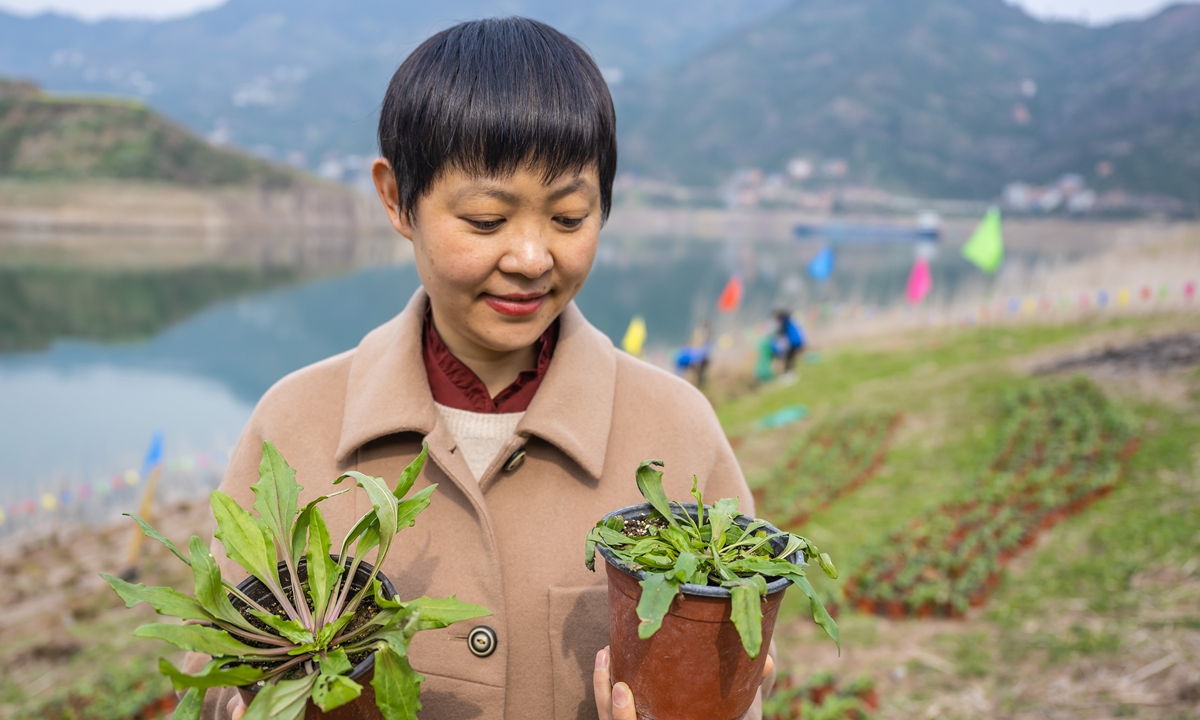
A volunteer looks at two rare plants before they are planted in Three Gorges Reservoir Area in Zigui county, Yichang, Central China's Hubei Province on March 12, 2024.Photo: VCG
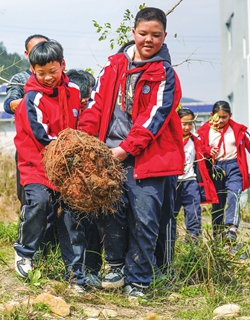
Students from Chengguan No. 4 Primary School in Congjiang county plant trees in Qiandongnan Miao and Dong Autonomous Prefecture, in Southwest China's Guizhou Province on March 12, 2024. Photo: VCG
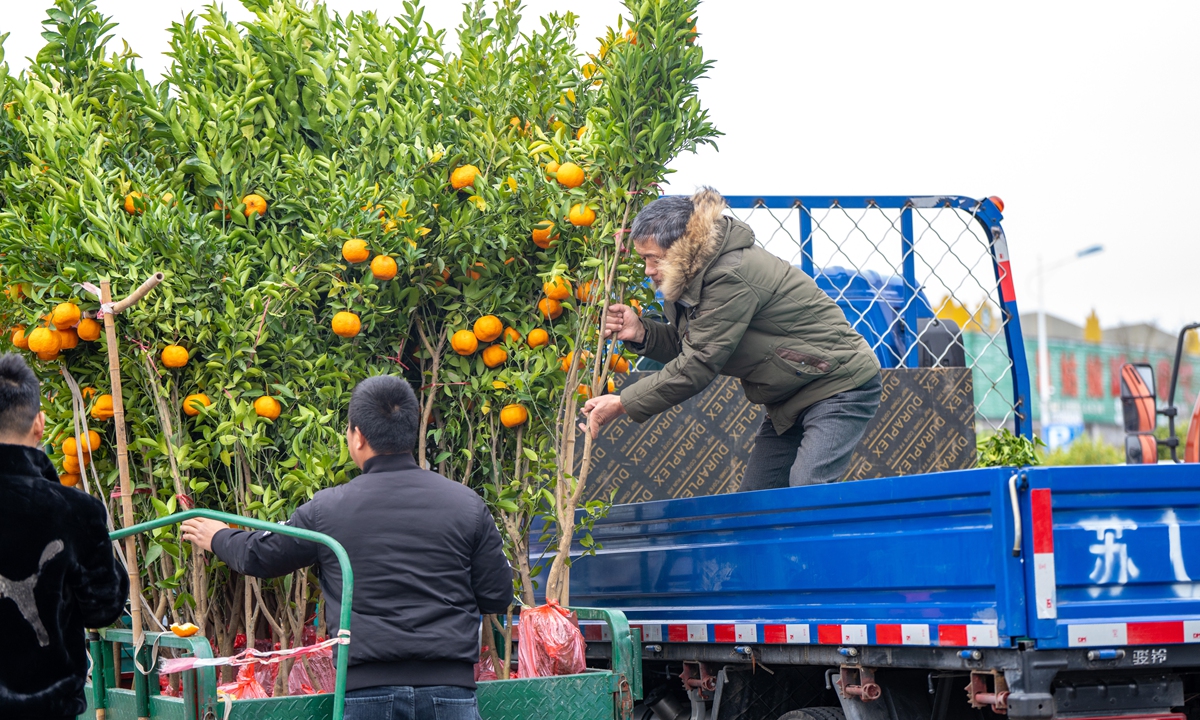
With the arrival of the best season for tree planting in spring, the seedling market is booming in Jinhua, East China's Zhejiang Province on February 20, 2024. Photo: VCG
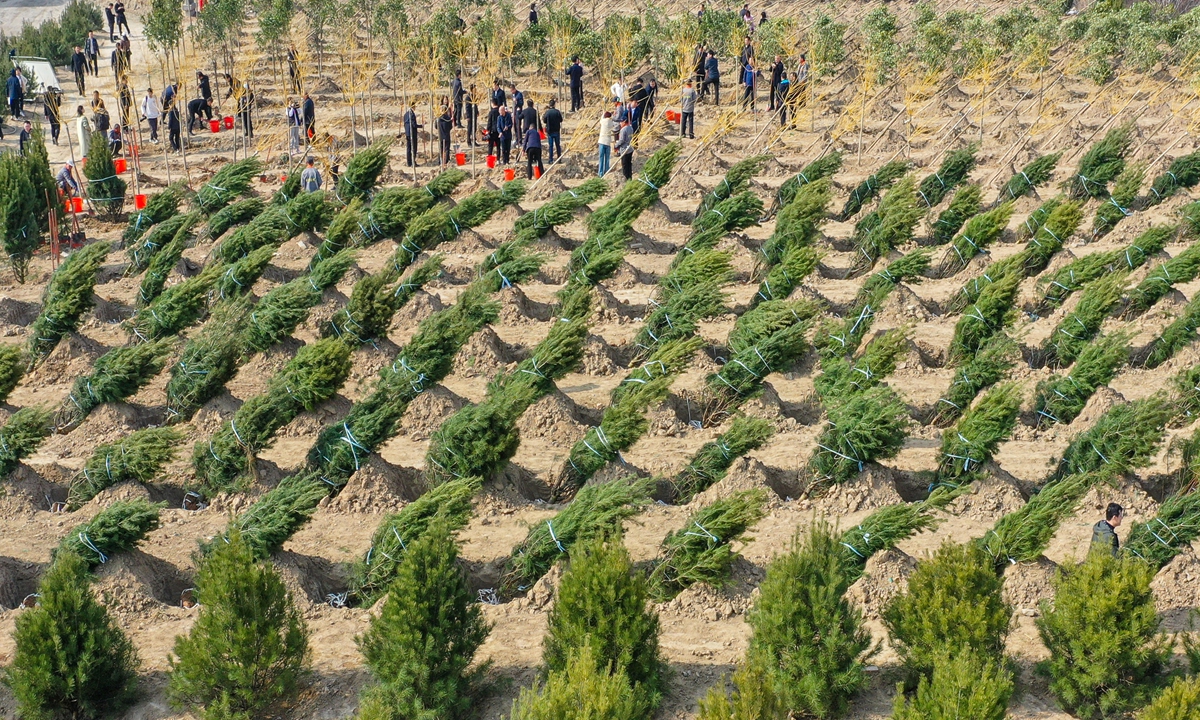
Young volunteers plant trees voluntarily in Yuncheng city, North China's Shanxi Province on March 12, 2024. Photo: VCG
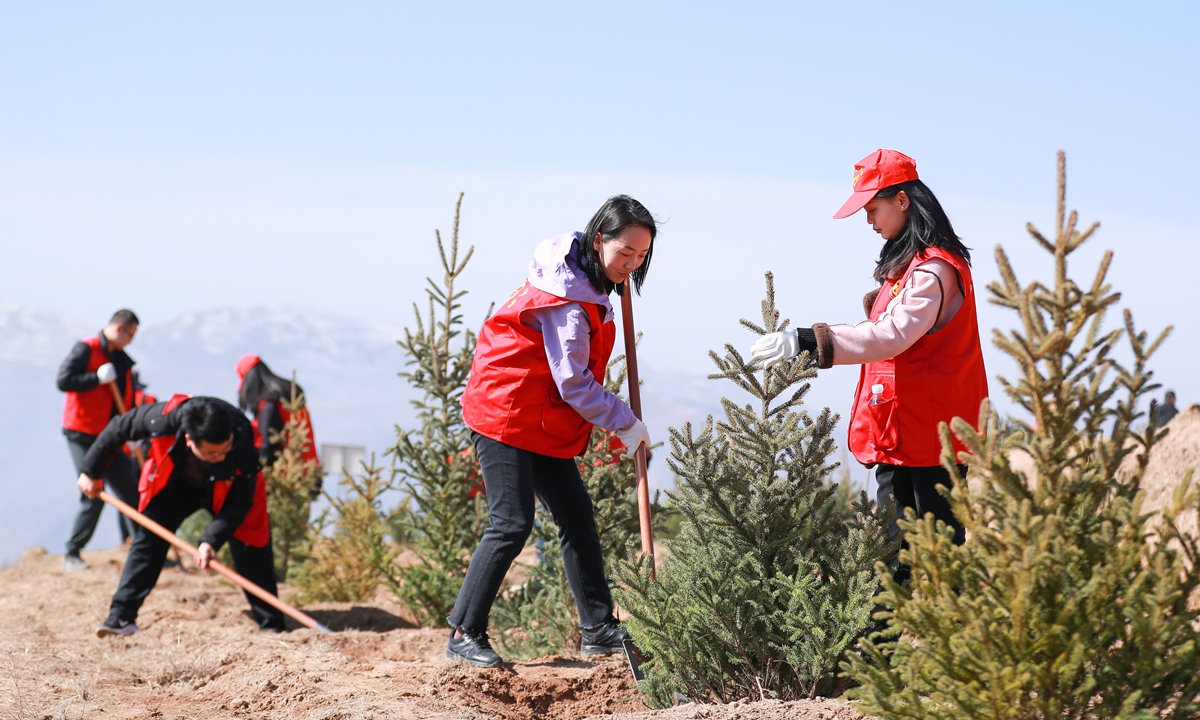
People plant trees on a voluntary basis at the Panlong Mountain greening and tree planting site in Shandan town, Wushan county, Tianshui city of Northwest China's Gansu Province on March 11, 2024. Photo: VCG

